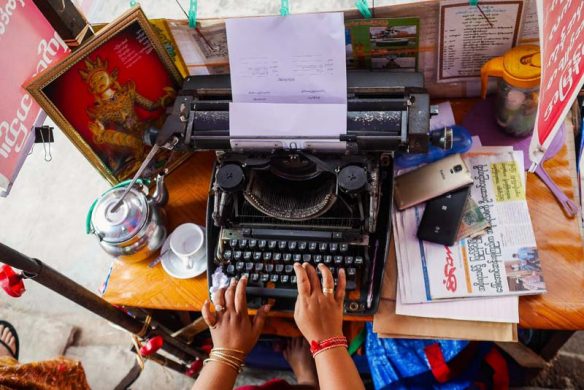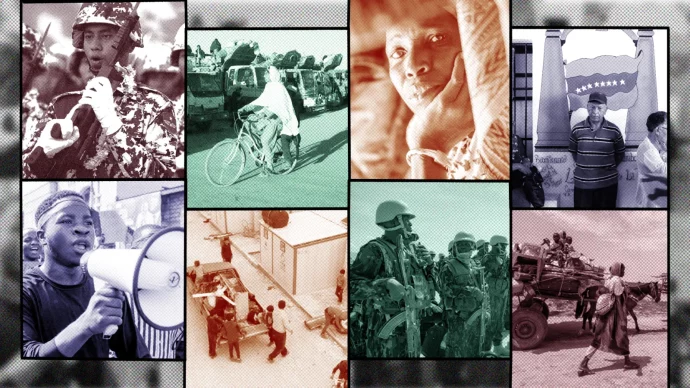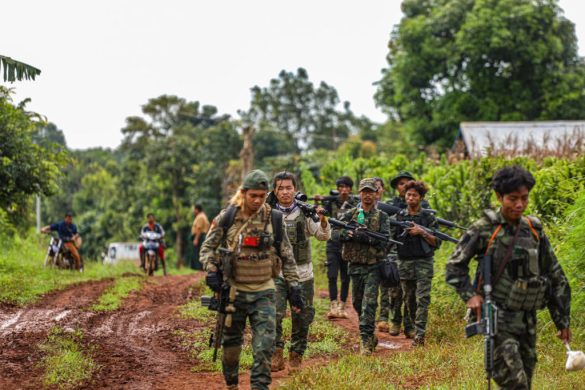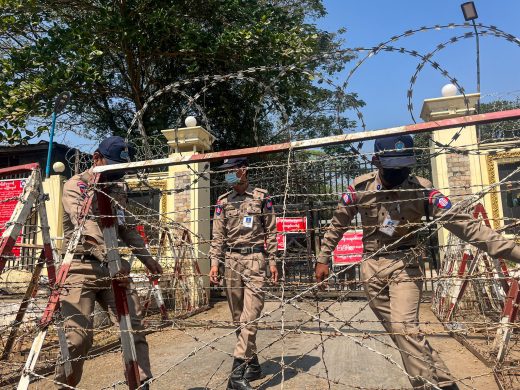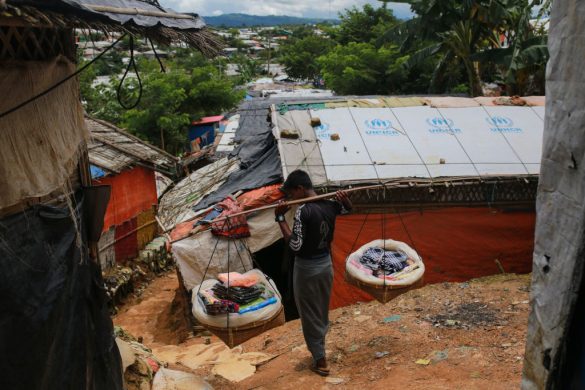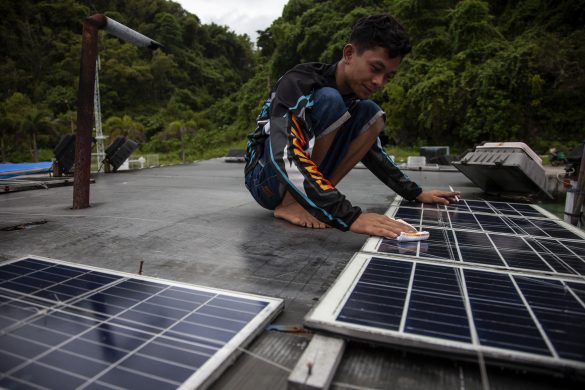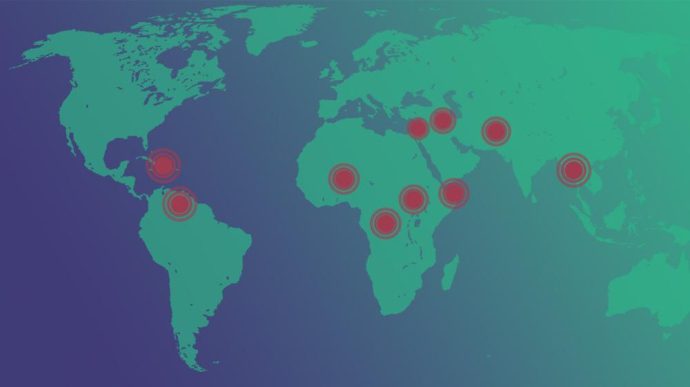On most afternoons, Tin Zaw Htet sits in front of a Cold War-era typewriter surrounded by satin-and-gauze portfolios and legal certificates hanging in the unrelenting Yangon sun.
On the lower block of Maha Bandoola Park Road, several typists are dutifully stationed in individual makeshift stalls alongside him. They earn their living within a bureaucracy that demands typed forms over handwritten ones, but in a locale where computers and printers remain luxuries and electricity is still unreliable.
Tin Zaw Htet shares a laminated certificate verifying his completion of a one-month typing course at a vocational training center five years earlier. Upon graduation, he left a job selling pet fish and joined his aunt, also a typist, in opening their own kiosk.
“I only want to work in my own business, even if I have to run it on roadsides,” he said.
The 28-year-old earns 1,000 kyats (US$0.83) per page filling out marriage certificates, power of attorney forms and other legal contracts with Burmese or English typescript; on an average day, he gets between 10 and 15 pages of work.
Tysk kvalitet
Small plaques engraved with the phrase “Made in Western Germany” betray the age of the typewriters that propel this small sector. Fifty-year-old Win Htay, who restores the machines, is nearly as old as the typewriters he has been repairing since he was 13 years old. He claims that they were first imported for Burmese civil servants under either U Nu or Ne Win’s government in the early 1960s.
Auctioned, refurbished and resold through the decades, the sturdy metal structures have yet to render themselves obsolete in Burma, even as the government offices that originally bought them now largely rely on computers, and lie 200 miles north in purpose-built Naypyidaw, no less. From a modest workshop in downtown Rangoon’s 35th Street, Win Htay still sells them, fully restored, for around 100,000 kyats (US$83). He said:
”I have a close attachment to these typewriters. This is all I know how to do. I don’t even know how to touch a computer.”

Nostalgi trumfer elektronik
When government offices began to move from Yangon to Naypyidaw in 2005, Win Htay lamented how many ambitious typists and repairmen also relocated their businesses—and their typewriters—to the remote new capital.
He is defensive when asked about the machine’s place among an increasing selection of more modern gadgets, foreseeing a continued reliance on typewriters in courts, schools and government offices particularly in rural parts of the country. About 70 percent of Myanmar’s population still has no access to the electricity needed to run more updated apparatuses.
“All they need is ink,” he pointed out, a testament to the typewriter’s sustainability.
Tin Zaw Htet acknowledges that one day he may have to adapt his work to accommodate changing technology, but says that he is lucky: He also knows how to use a computer. However, it is not a shift he will wholly welcome. He adds:
”[Typewriters] challenge us to be more efficient, to see our errors on paper, so we are more careful not to make mistakes.”
He also describes a satisfaction in working with the older machines.
”The feeling of using typewriters and using computers is different. We can feel a lot of feedback from a typewriter’s keys. It makes noise. I kind of like it.”
Typewriters brought to Burma during an earlier era will likely continue to maintain a value beyond nostalgia and, for now, a function on the country’s technological spectrum.

